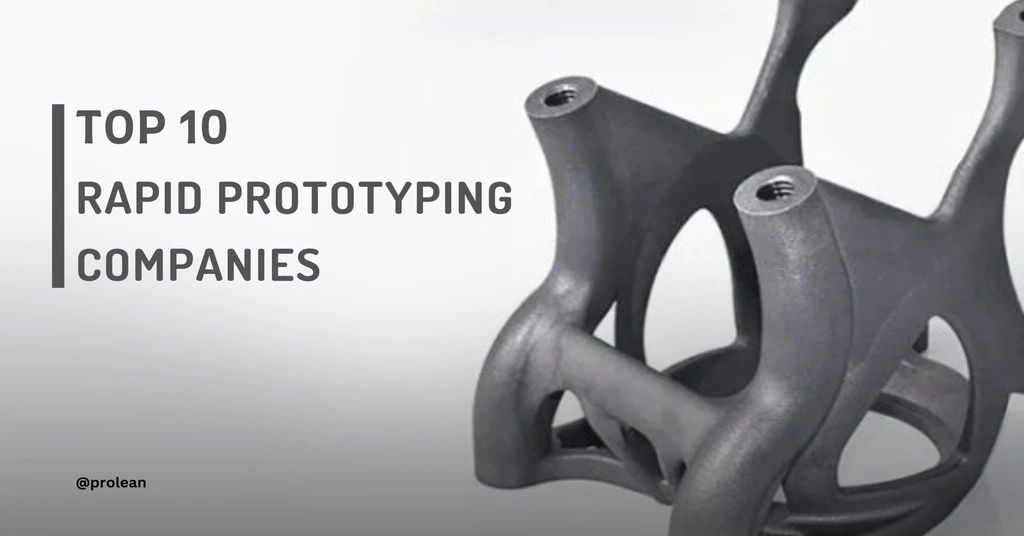
Rapid prototyping has transformed the automotive industry. One of the main factors is the ability to rapidly prototype intricate designs, propelling progress in this industry. The automobile prototyping has consistently led the way in innovation and technical breakthroughs. Manufacturers launch new car models more quickly because of automotive prototyping, giving them a competitive advantage in the market.
It entails building tangible prototypes of automobile components or complete vehicles by using a variety of cutting-edge technologies and methods. Rapid prototyping in automotive aims to shorten time-to-market, enhance design quality, and speed up the product development cycle.
This article will examine the advantages of rapid prototyping in automotive industry and how it has changed the design and production of automobiles.
What is Rapid Prototyping?
Rapid prototyping is used to create physical models using different technologies like 3D printing. Prototyping automotive allows manufacturers to test components and improve systems prior to full-scale production. This technology has the ability to improve the overall quality and functioning of custom automotive parts. Rapid prototyping is growing in the automotive sector for innovation, sustainability, and improved performance.
Advanced technologies, including 3D printing, CNC machining, and hybrid manufacturing, are frequently used in this procedure. Rapid prototyping automobile solutions assist manufacturers in cutting development cycles, lowering costs, and improving design correctness by directly converting CAD (Computer-Aided Design) files into actual parts.
Rapid prototyping allows teams to conceptualize, test, and refine concepts before committing to mass manufacturing, bridging the gap between an idea and a final product.
Benefits of Rapid Prototyping for the Automotive Industry
Automobile manufacturers may speed up the design and development process by using rapid prototyping. Conventional techniques for producing tangible prototypes required labor-intensive procedures like molding and machining. Since this process has many benefits for prototyping automotive:
- Faster time-to-market for prototype cars
One of the main benefits is the speed of fast prototyping. Rapid prototyping allows for the creation of a prototype in a matter of hours or days, whereas traditional manufacturing processes might take weeks or even months. This shortens the time it takes for a product to reach the market by enabling producers to test and develop their ideas far more rapidly.
- Improved testing for custom automotive parts
In addition to speed, rapid prototyping is essential to validate a design before mass manufacturing in order to prevent expensive errors. Designers and engineers may produce physical prototypes that closely match the finished product. These prototypes may be evaluated for a number of factors, including functionality, structural integrity, and aerodynamics.
Potential defects and performance problems can be fixed quickly in the early stage of the design process. This iterative method ensures an optimized design resulting in custom automotive parts. Hence, it reduces the possibility of design flaws before reaching the production stage.
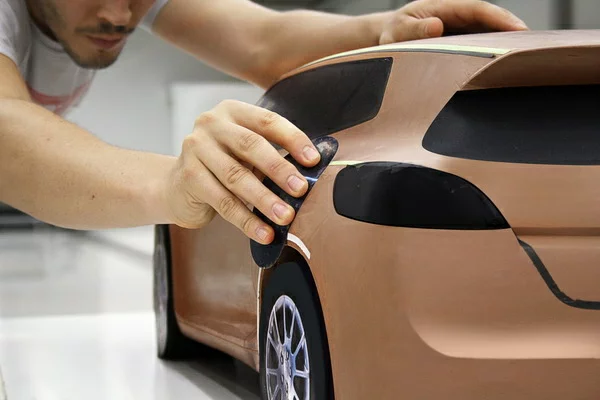
Automotive Prototyping
- Reduced cost in automotive prototyping solutions
Rapid prototyping requires reduced cost in automotive prototyping solutions. Large upfront expenditures were frequently associated with traditional prototype techniques, particularly for tooling and molds. It was challenging to defend several iterations or design modifications because of these expenses, since digital CAD models may be used to create prototypes immediately. Since prototype automobile manufacturers can quickly refine their ideas and make changes without incurring significant costs.
- Delivering Tailor-Made Automotive Prototypes
One of the greatest advantages of rapid prototyping in automotive industry is delivering tailor-made prototype cars. Today’s consumers demand personalized experiences when it comes to their vehicles. Automobile manufacturers may more effectively investigate customization and personalization options with rapid prototyping.
Manufacturers may obtain important client input and adjust designs by rapidly producing prototypes of several design iterations. The iterative process increases customer loyalty and happiness by ensuring that the finished product fulfills client expectations.
- Streamlined Collaboration for Faster Prototyping
Better cooperation and communication between design teams, engineers, and stakeholders are made possible by rapid prototyping. Teams debate and assess many parts of the vehicle when physical prototypes provide a visual presentation of a design concept.
Reviewing and sharing of design iterations facilitates more effective feedback and decision-making. All stakeholders are kept in sync throughout the development cycle, which also helps to expedite the design process.
Popular Methods for Rapid Prototyping in Cars
You may depend on cutting-edge technology for automotive prototyping. These technologies are used to build and test components before sending the product to the market. These are the most popular methods employed by manufacturers to create prototypes for the automobile industry.
Rapid Prototyping with CNC Machining
Rapid prototyping with CNC machining techniques can help your vehicle prototype projects succeed. Automotive CNC machining works well for producing fully functional prototypes with precise measurements and high-quality materials. Additionally, surface treatments are necessary for the pieces of your car to have a nice appearance. It is simple to do using CNC procedures.
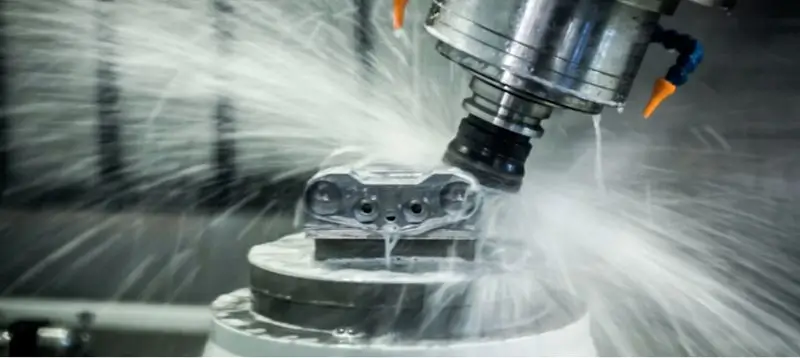
CNC Machining
3D Printed Automotive Parts
Modern 3D printing technology may be utilized to build vehicle parts from a variety of materials. 3D printed automotive Parts may be made efficiently with 3D printing technology. These prototypes can be used to test the intended items.
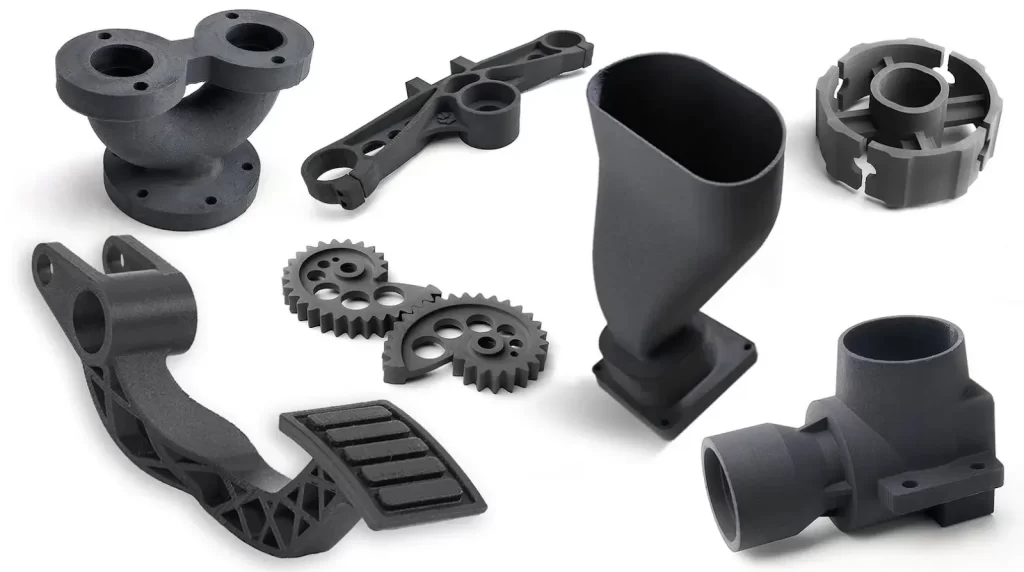
3D Printed Automotive Parts
Vacuum Casting
It is another contemporary technology designed for rapid manufacturing. Professional engineers use silicone molds in vacuum casting, and a prototype is made for testing. However, only a limited sample of prototypes is made using this procedure.
Rapid Tooling
Rapid tooling is an automotive prototyping solution for producers that need to create multiple prototypes at once. The injection molding method, which creates parts more quickly, is another option. The nicest thing about injection molding is that it’s a cheap procedure that allows you to make a lot of prototypes.
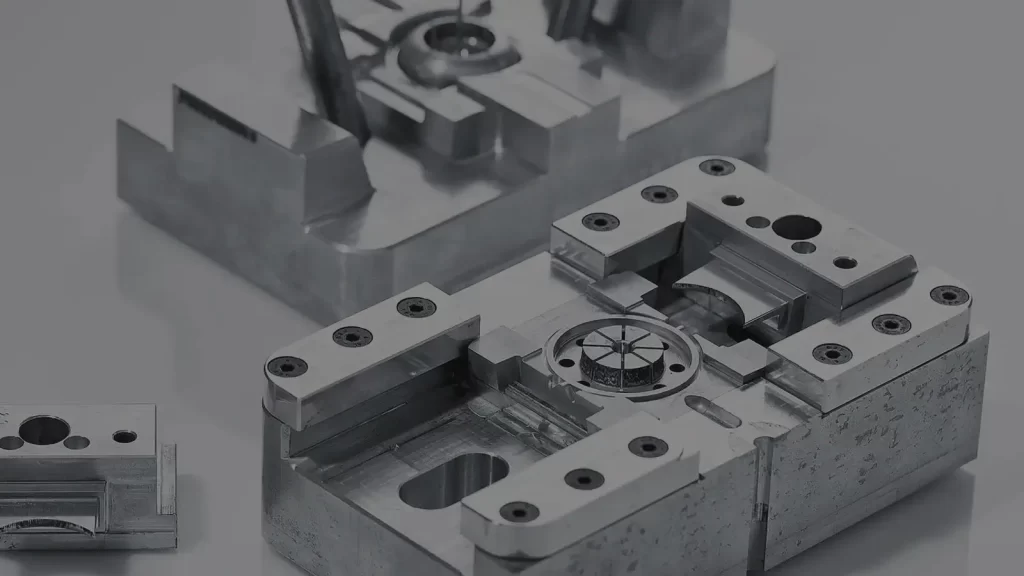
Rapid Tooling
Hybrid Manufacturing Approaches
A single machine or workflow that combines prototyping machining (CNC machining) with additive manufacturing (3D printing) is known as hybrid manufacturing. By adding material layer by layer and then refining it using machining techniques like milling, turning, or grinding to produce exact dimensions and surface finishes, this integrated method makes it possible to create complicated objects.
The following table lists the main hybrid manufacturing techniques for automotive fast prototyping, along with practical applications and benefits:
| Hybrid Manufacturing Approach | How It Works | Automotive Example | Key Benefit |
| 3D Printing(FDM) + CNC Machining | 3D print the base geometry, then CNC machine critical features with tight tolerances. | The intake manifold is printed in plastic and CNC milled for precise mounting holes. | Faster production with ±0.001 mm accuracy on critical areas. |
| Metal Additive Manufacturing (SLS) + CNC Finishing | Use metal 3D printing for complex shapes, then CNC mill for final accuracy. | The aluminum suspension bracket DMLS was printed and CNC finished for bolt hole alignment. | Combines complex design freedom with high precision. |
| Vacuum Casting + CNC Tooling | CNC machine molds, then uses vacuum casting for small-batch production. | Dashboard knobs cast in polyurethane using CNC-machined molds. | Cost-effective for low-volume, high-quality parts. |
| Injection Molding + SLA Inserts | Mold the main part, and add Stereolithography (SLA) printed inserts for intricate details. | Plastic housing molded, with 3D-printed channels for custom wiring paths. | Customization within high-volume production. |
| Sheet Metal Fabrication + Laser Cutting + CNC Bending | Laser cut shapes, then CNC bend for final form. | Body panel laser cut for accuracy, CNC bent to match vehicle contours. | High repeatability and consistent fit. |
Try Prolean Now!
Automotive CNC Machining for High-Precision Prototypes
Selecting the right materials is one of the most important factors for automotive CNC machining. The selected material determines the prototype’s stiffness, durability, and weight. Depending on a particular design and performance criteria, rapid prototyping enables the manufacturer to test many kinds of materials, including metals, composites, and plastics.
Materials such as ABS are a desirable and robust plastic for the interior and tiny parts. Nylon works well for functional tests and assembly applications because it is lightweight and adaptable. Because of their remarkable strength and ability to withstand heat, materials like titanium and aluminum are crucial for use in structural frames and engines.
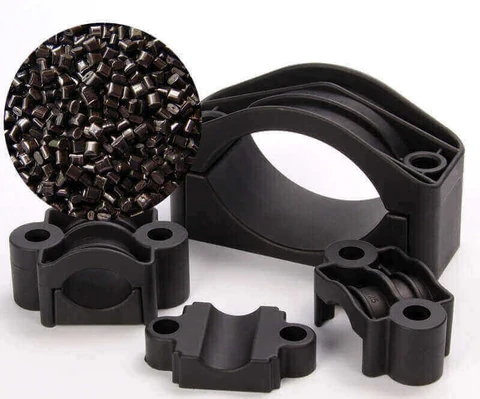
ABS Plastic for Automotive Parts
When automobile engineers choose the right material, they may be sure that the final design will almost exactly resemble the prototype auto.
| Material Type | Common Materials | Automotive Applications | Key Benefits |
| Metals | Aluminum, Steel, Stainless Steel, Titanium, Brass | Engine components, brake calipers, suspension parts, heat exchangers | High strength, heat resistance, and durability |
| Plastics | ABS, POM (Delrin), Polycarbonate, Nylon, PEEK | Interior trim, dashboard components, light housings, sensor casings | Lightweight, corrosion-resistant, easy to machine |
| Composites | Carbon fiber-reinforced polymer, fiberglass | Structural panels, aerodynamic parts, lightweight brackets | Exceptional strength-to-weight ratio, stiffness |
From Digital Design to Prototype Car
A systematic development procedure is followed by each automotive design and prototyping to guarantee that it satisfies usability, safety, and performance requirements.
- Concept Creation & Feasibility Analysis
Prior to beginning any automotive prototype, engineers establish essential specifications, such as:
- Practical uses and target market
- Performance objectives like emissions, efficiency, and speed
- Type of powertrain, such as electric, hybrid, or ICE
- Hardware and software requirements
The project advances to the design phase when the feasibility analysis demonstrates that the idea is workable.
- Design and Engineering of Automotive Prototypes
This stage entails creative ideas being converted into comprehensive and useful production plans. The prototype’s accuracy, performance, and manufacturability are assessed for each component using sophisticated CAD software and engineering analytical tools.
This stage encompasses creating the prototype car, which includes:
- Mechanical design consists of the layout of the vehicle’s chassis, suspension, and motor.
- Electrical systems provide solutions for communication, battery management, and wiring.
- Control algorithms, safety features, and ECU programming are examples of embedded software.
Engineers concentrate on part shape optimization, material selection, and industry standard compliance in automotive CNC machining and rapid prototyping processes. This phase establishes the framework for creating an automobile prototype that functions perfectly in real-world scenarios.
- Prototype Vehicle System Development
Integrating mechanical, electrical, and software components into a functioning model is necessary to produce a viable prototype car.
This stage consists of:
- Custom mechanical parts are produced using CNC machining and 3D printing.
- Creating ECUs, sensors, and control modules is known as rapid electronics prototyping.
- Integration of the Battery and Power System for electric and hybrid car prototypes.
- HIL (Hardware-in-the-Loop) testing simulates real-world scenarios prior to road testing.
In this stage, engineers put together the automotive prototyping solutions into a working unit for preliminary testing.
- Testing and Validation of Automotive Prototypes
This stage involves prototype car testing to ensure the automotive design and prototyping satisfy safety, performance, and regulatory criteria before going into full-scale manufacturing. This procedure is functional to check road trials, collision simulations, durability evaluations, and environmental stress assessments. Engineers examine flaws, hence increasing component reliability.
This stage is essential for improving the design and ensuring the finished vehicle satisfies consumer and industry requirements.
Try Prolean Now!
Tolerances and Standards in Automotive Rapid Prototyping
Precision is a standard for quality in the automobile sector. The degree to which the finished product adheres to the original design parameters depends on the tolerance range associated with each rapid prototyping procedure.
The accepted quality standards, such as ISO 9001 and ISO 13485, ensure consistency and accuracy. The common automotive rapid prototyping techniques, their achievable tolerances, and pertinent criteria are compared in the table below:
| Rapid Prototyping Process | Tolerance | Standards |
| Rapid CNC Machining | ±0.001 mm | ISO 9001 & ISO 13485 |
| Rapid Injection Molding | ±0.005 mm | — |
| Rapid Sheet Metal Fabrication | ±0.05 mm | — |
| Rapid 3D Printing | ±0.01 mm to ±0.05 | — |
| Rapid Vacuum Casting | ±0.05 mm to ±0.2 | — |
| Die Casting Services | ±0.001 mm | — |
Outsource Rapid Prototyping and Manufacturing: When and Why
Outsourcing rapid prototyping and manufacturing is a wise strategic move for many automakers to save money and time. Businesses may use the capabilities of knowledgeable service providers with cutting-edge CNC machines, industrial 3D printers, and advanced molding technologies. When and why companies choose rapid prototyping services:
When to Consider Outsourcing:
- Cost savings: Businesses can use economies of scale and cost reductions by outsourcing manufacturing to other countries. By utilizing existing facilities and equipment, significant capital investments are avoided.
- Short Development Timelines: When internal resources are at capacity, outsourcing helps fulfill deadlines.
- Specialized Prototypes: Access to cutting-edge materials and specialized production techniques is made possible by outside partners.
- Multiple Iterations: Facilitates quick turnaround for many design variants without overburdening internal teams.
Why Outsourcing Works:
- Expertise: Outsourcing manufacturing can be a good way to benefit from specialist knowledge and experience. The expertise of suppliers that possess a thorough understanding of their specific industry, materials, and production methods can be advantageous to businesses. By tapping into this experience, organizations may increase product quality and lower operating expenses.
- Take advantage of emerging technologies: There is a wide variety of technologies accessible today, each of which has a specific function. These technologies, like SLA, SLS, and DMLS, are frequently accessible and prepared for usage in rapid prototyping in automotive industry that is outsourced.
- Scalability: The capacity of a system, procedure, or company to accommodate growing workloads or demands without compromising effectiveness, efficiency, or quality.
- Focus on innovation: When production is managed by qualified professionals and delivered in a timely manner with high quality, businesses focus on innovation. Businesses may maintain a lean operation in the target markets to boost product sales.
Automotive manufacturers may speed up development, maintain excellent quality, and concentrate more on design innovation than manufacturing limitations by working with the right prototyping provider.
Prototype Machining for Custom Automotive Parts
Prototype machining is an essential stage in creating custom automobile parts. Engineers can create metal or plastic prototypes with precise tolerances, frequently within ±0.001mm, using precision CNC machines. This method is perfect for parts where precision and longevity are crucial, such as dashboard assemblies, suspension brackets, and engine housings.
Prototyping machining is used to evaluate fit and functionality before proceeding to full-scale production. This accelerates prototyping rapid cycles without any costly design errors.
Prototype machining gives the freedom to design genuinely unique solutions that are suited to particular automotive requirements, whether it’s a prototype auto or a performance enhancement.
Future of Automotive Prototyping Solutions
As the technologies evolve, automotive prototyping is transforming towards digital twins, AI-driven prototyping, 3D printing advancements, and autonomous connected vehicles.
- 3D printing advancement
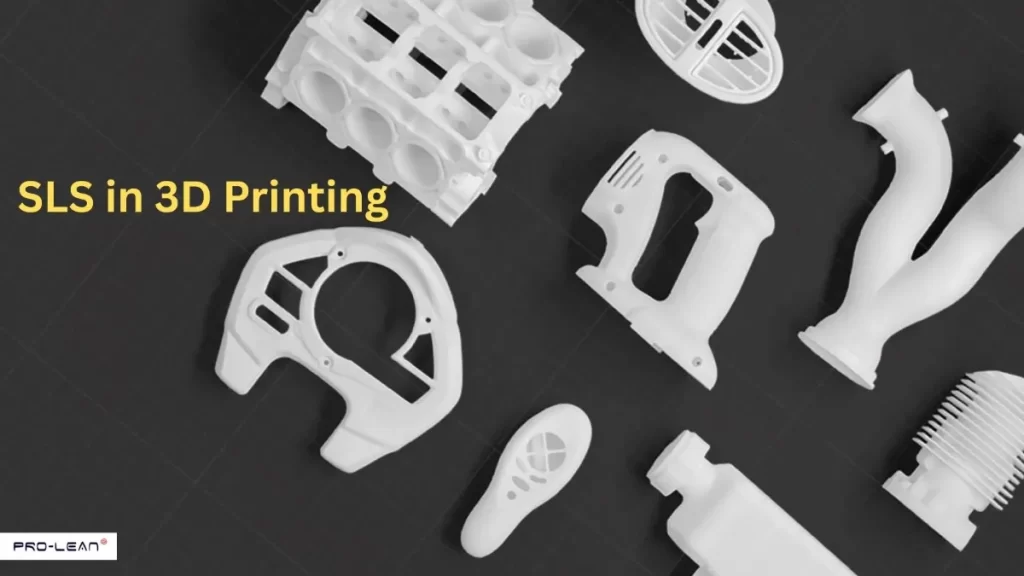
The growing use of 3D printing technology is one of the major trends in the market for automotive design and prototyping. By providing a quicker and more affordable substitute for conventional techniques like injection molding and casting, 3D printing has completely changed the way automakers approach prototypes.
The automobile sector is anticipated to gain from increased precision, decreased material waste, and speedier manufacturing periods as 3D printing technology advances, enabling the rapid creation of new cars and components.
- Al-driven design
ML and AI-driven designs are increasingly used to enhance design and production processes. Manufacturers may forecast the performance of systems and components by using AI-powered algorithms before production. AI technologies can see possible problems early in the design process.
- Sustainable Prototyping Practices
Due to more emphasis on greener production, recycled materials, sustainable materials, and energy-efficient procedures are being used in prototyping a rapid workflow. This lessens the impact on the environment without compromising quality.
- Digital Twins Technology
Engineers can create a visual prototype of an automobile for faster testing. This may reduce the number of physical iterations required for simulating performance, predicting wear, and improving designs in real time.
- Innovation in Advanced Materials
Technological advancement in high-strength metals and lightweight polymers makes it possible to produce stronger, lighter, and rapid prototyping parts. This innovation opens the door to more environmentally friendly and efficient automobiles.
Bring Your Automotive Prototype to Life with Prolean
ProleanTech’s rapid prototyping services accomplish outstanding results all over the world. Our highly skilled and knowledgeable engineering team has used the newest prototyping technology. With our prototype facilities, we are ideally positioned to offer a full range of services to meet the demands, deadlines, and unique requirements of clients worldwide.
To discuss your concept and make your idea a reality, get in contact with us right now!
Final Thought
To sum up, rapid prototyping in automotive industry has completely changed the design and development process. Automotive prototyping has become a vital tool for automakers because of its benefits.
Rapid prototyping will likely become even more important in determining the direction of the automotive industry in the future as technology develops, resulting in the development of creative, effective, and customer-focused automobiles.

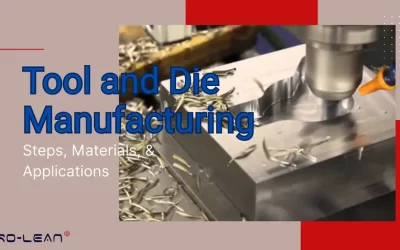
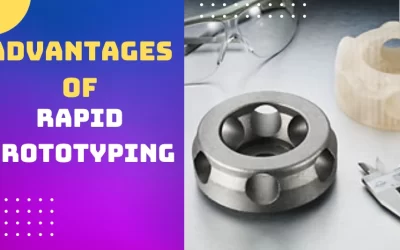
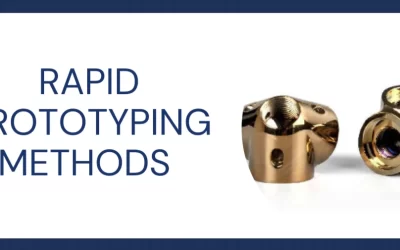
0 Comments